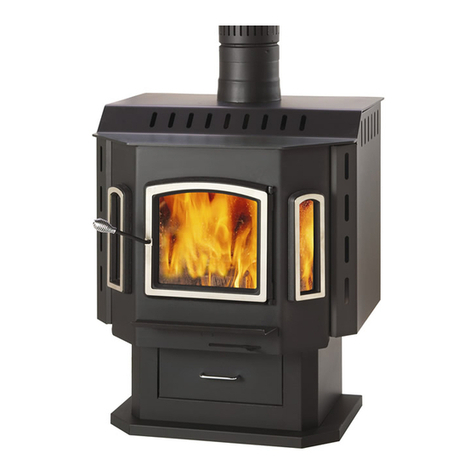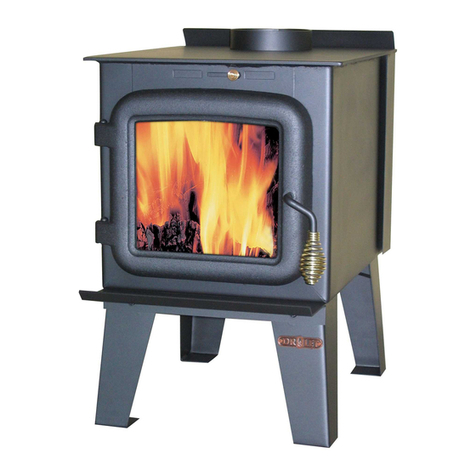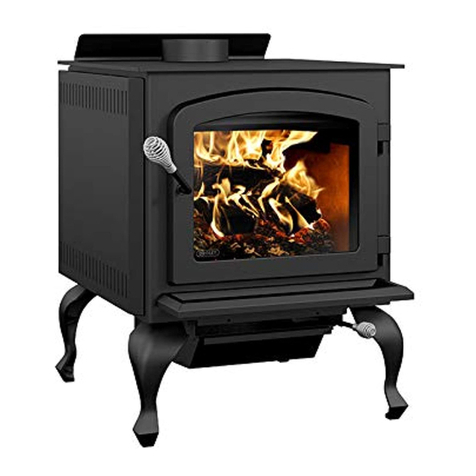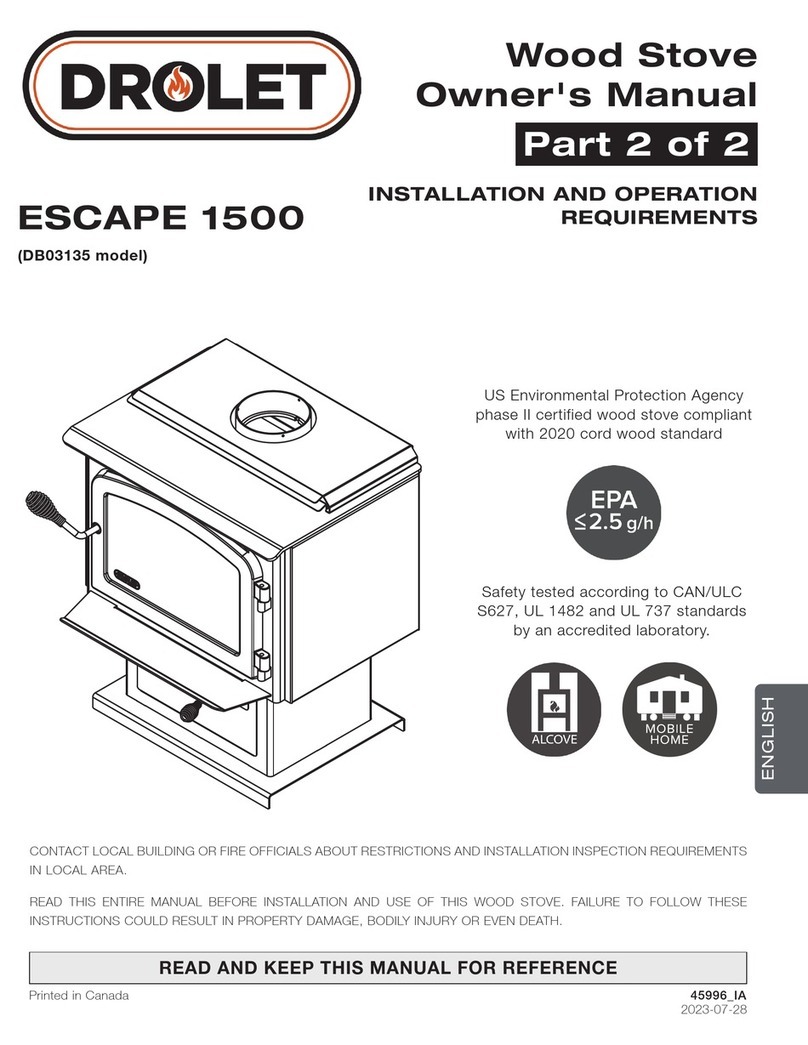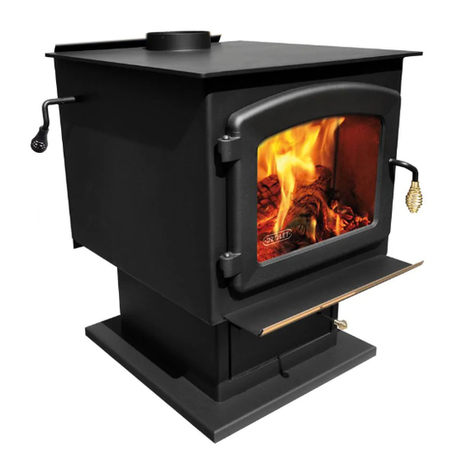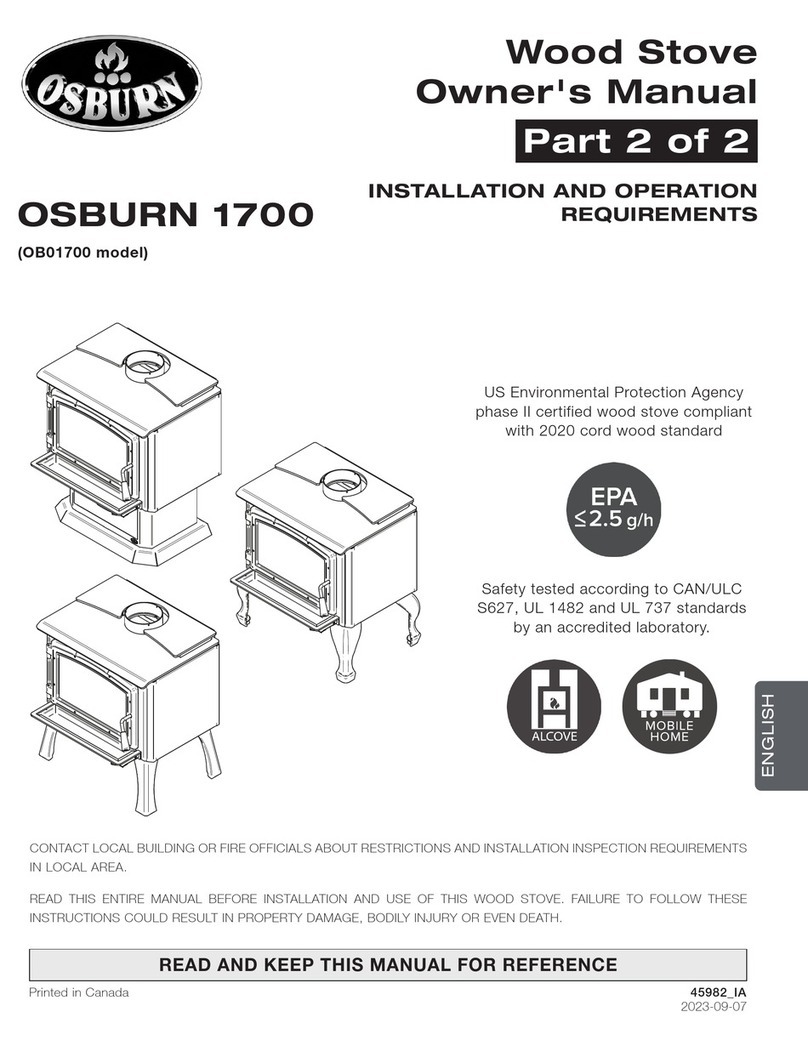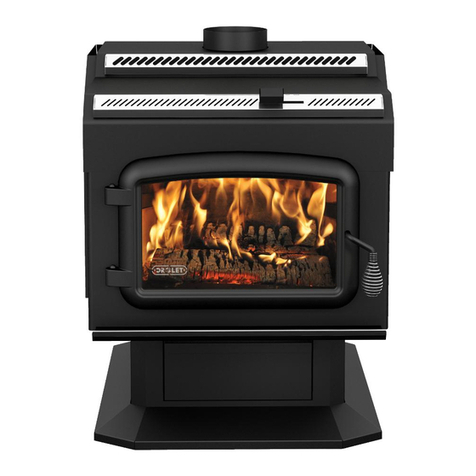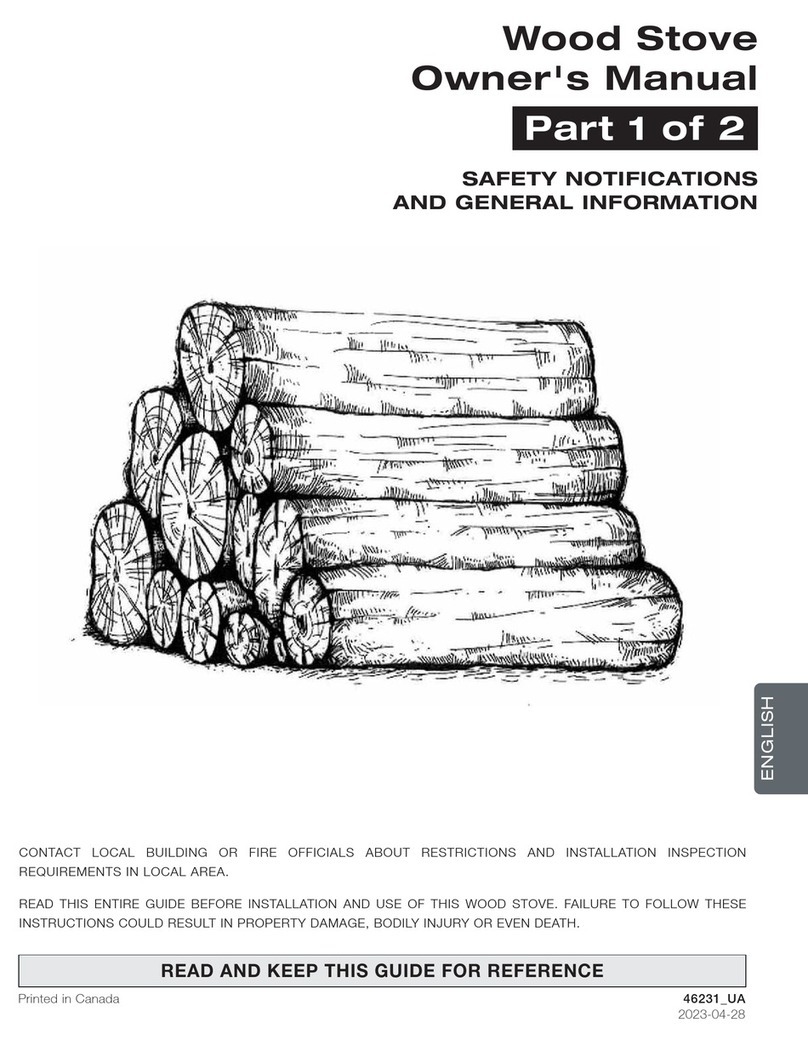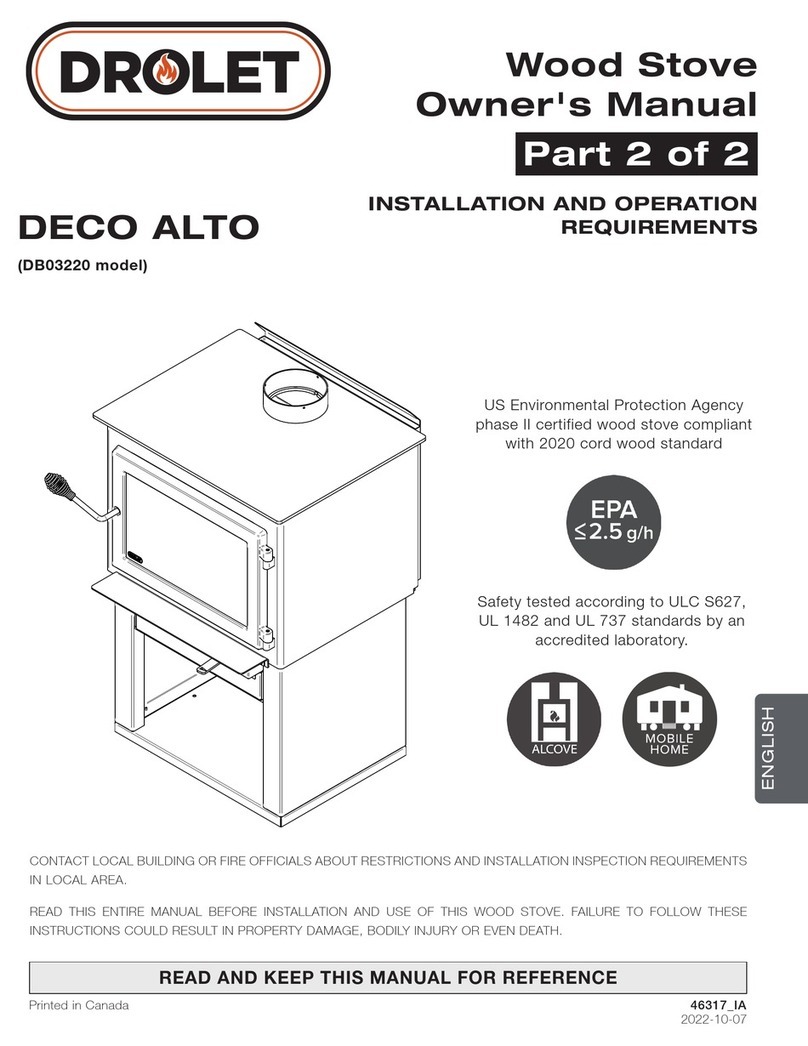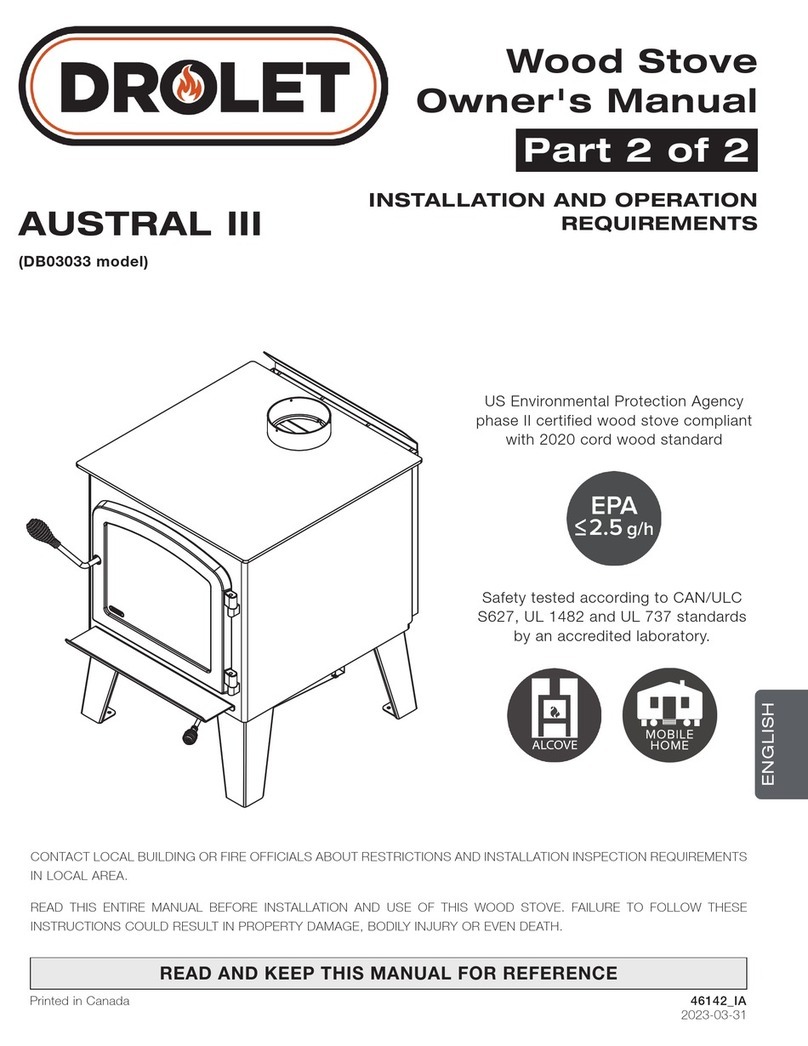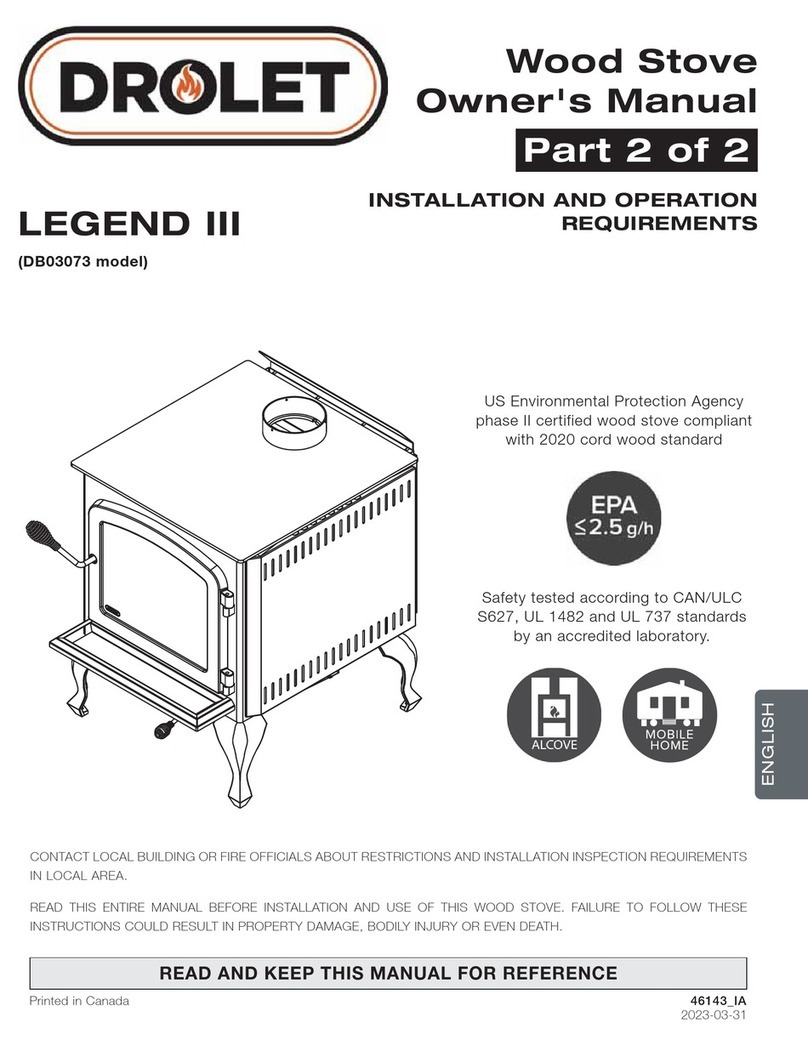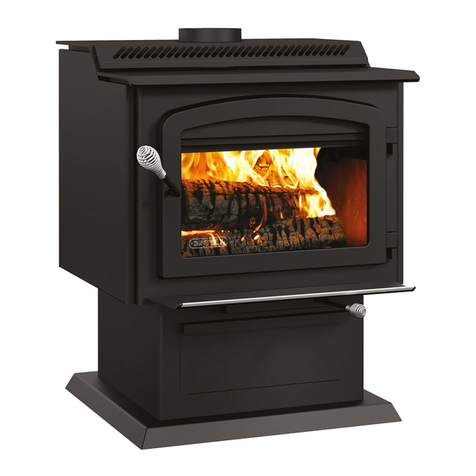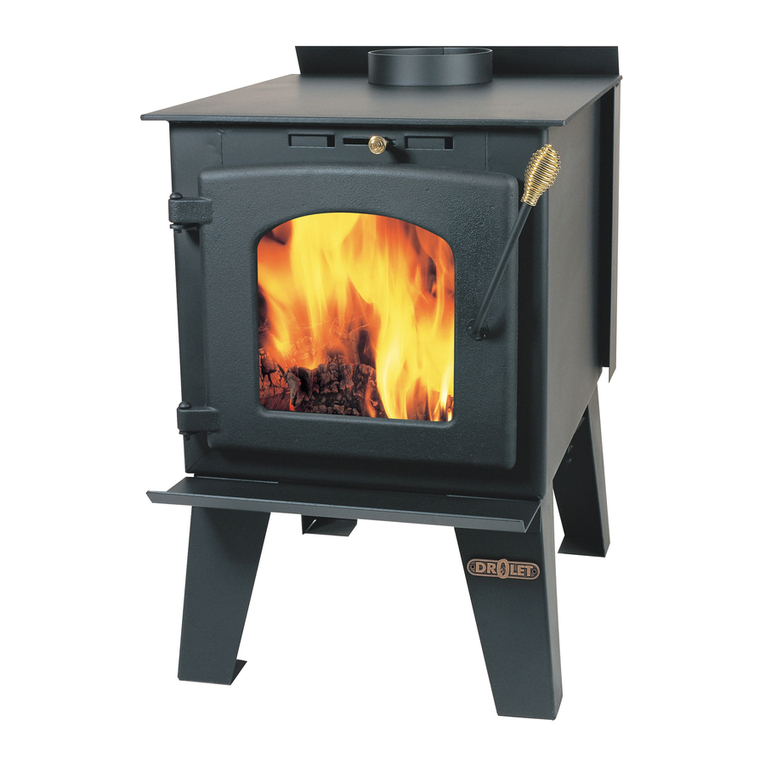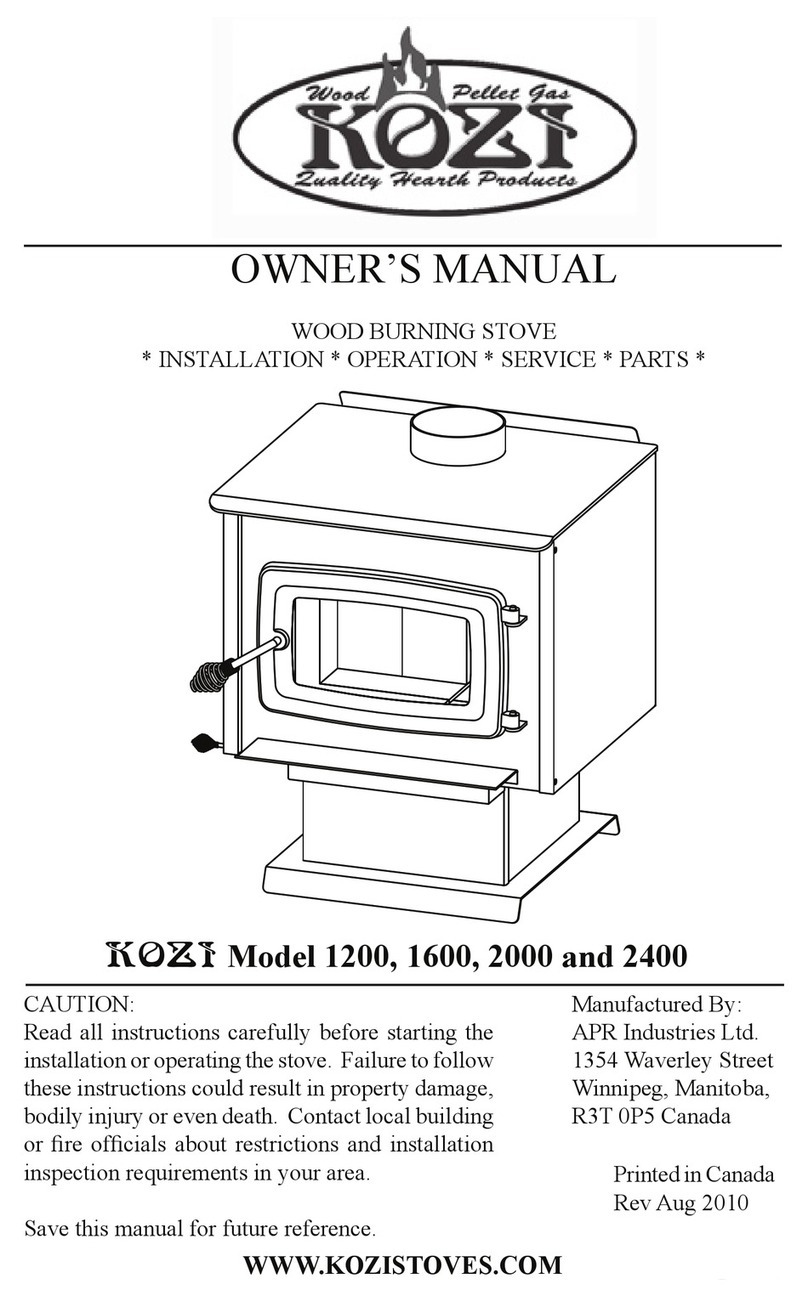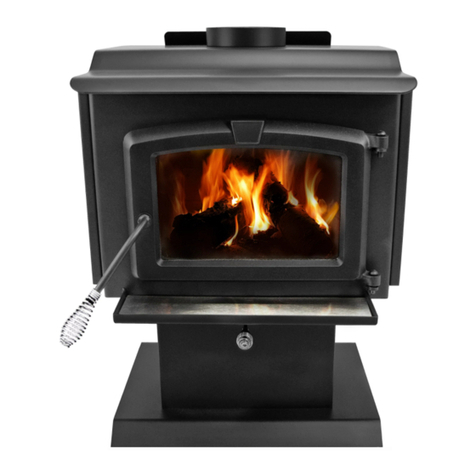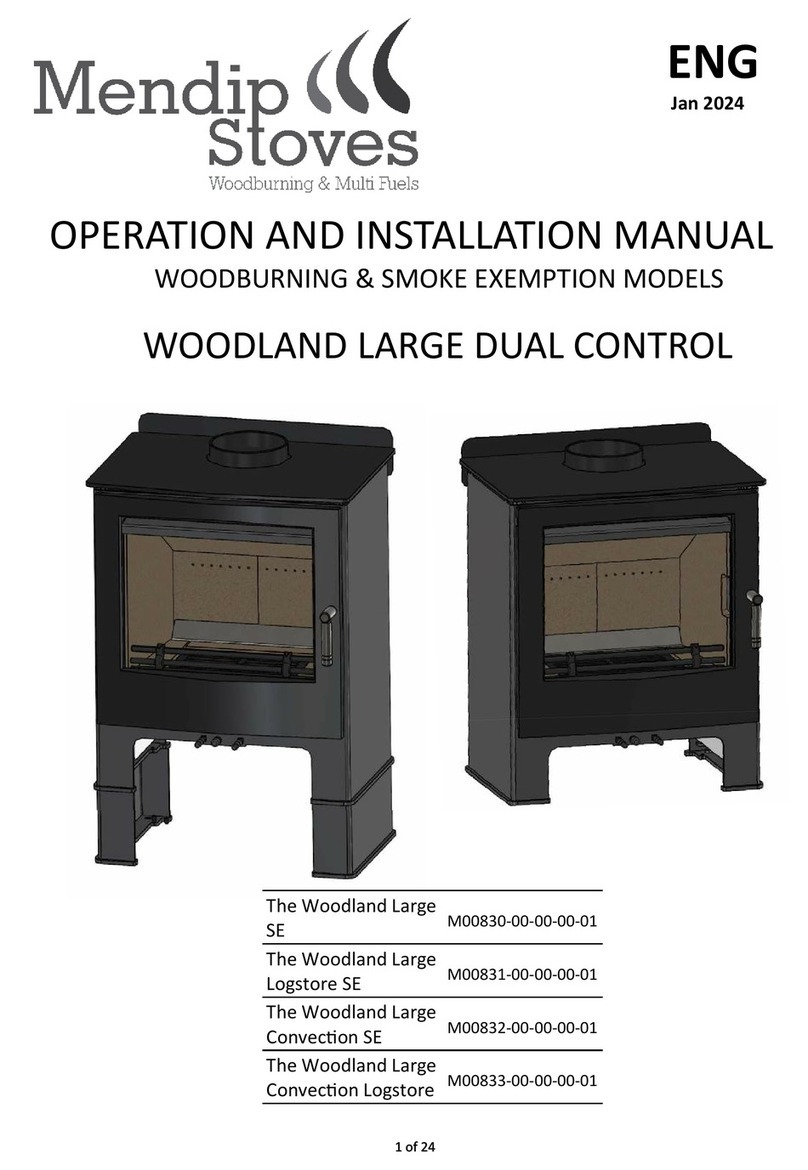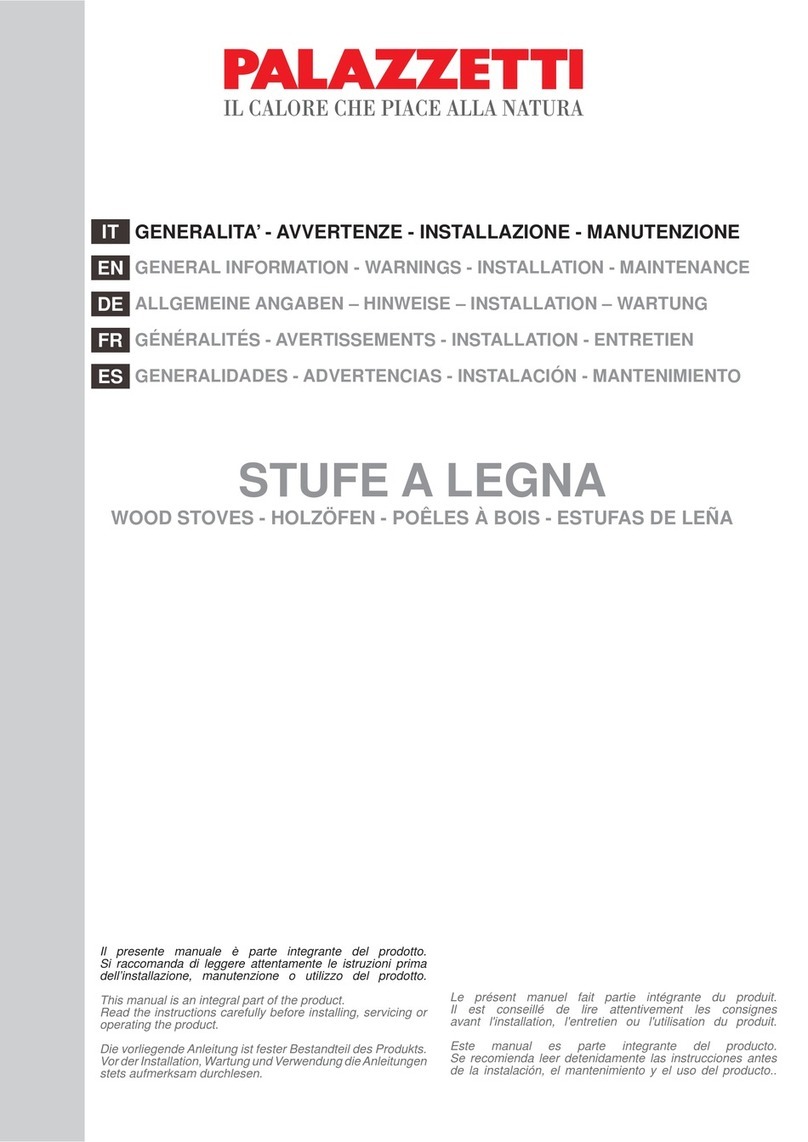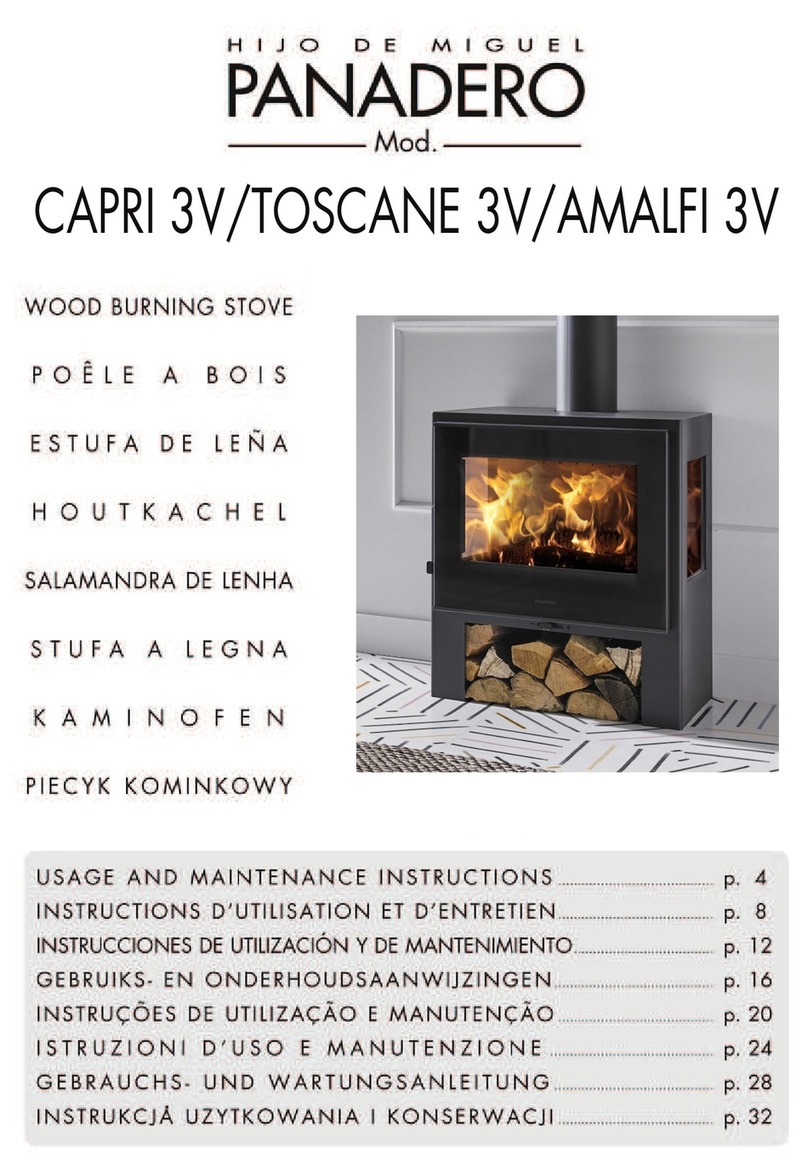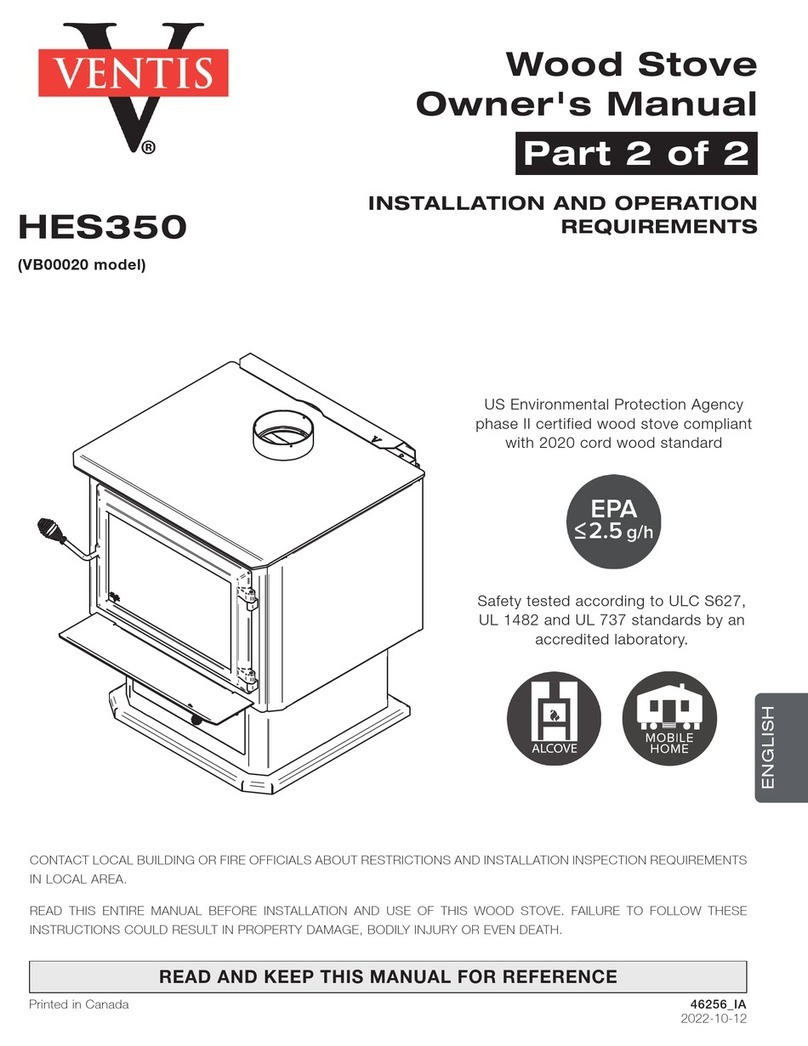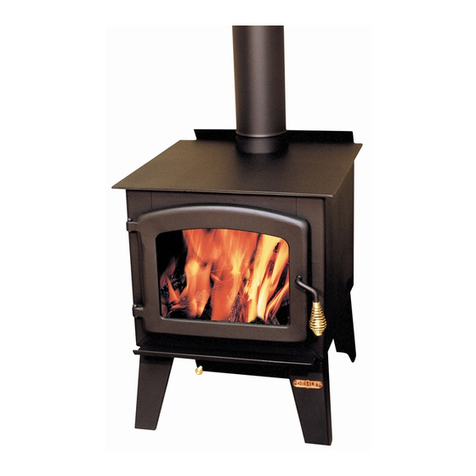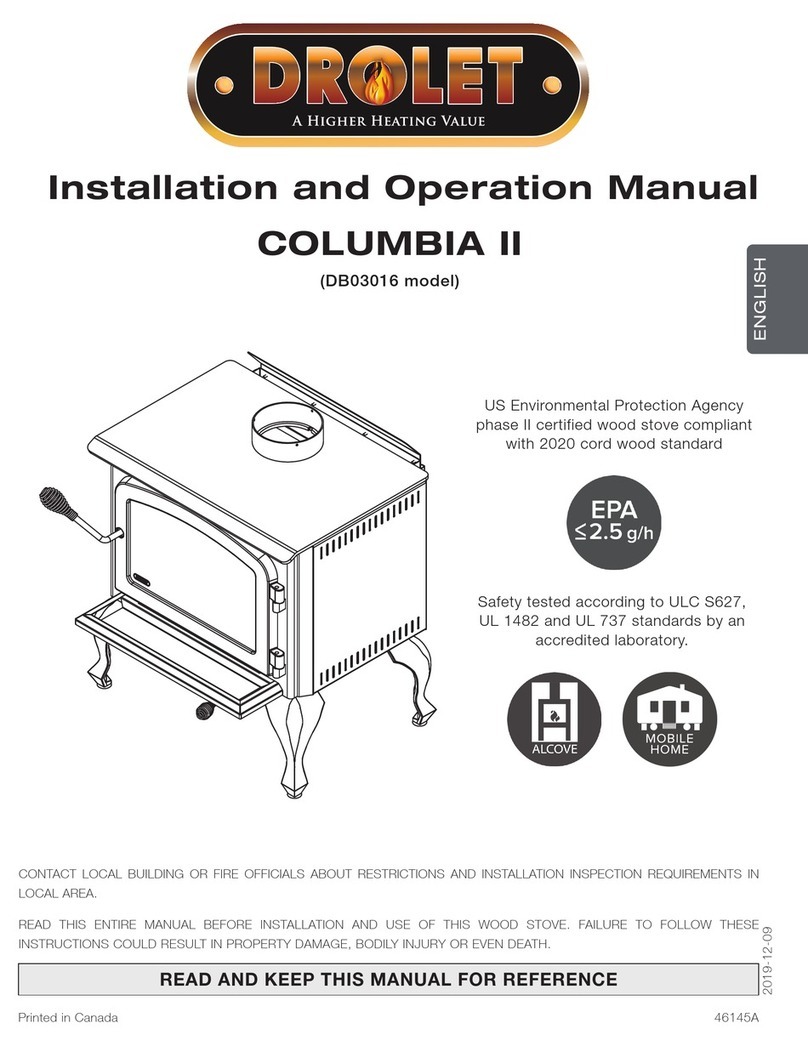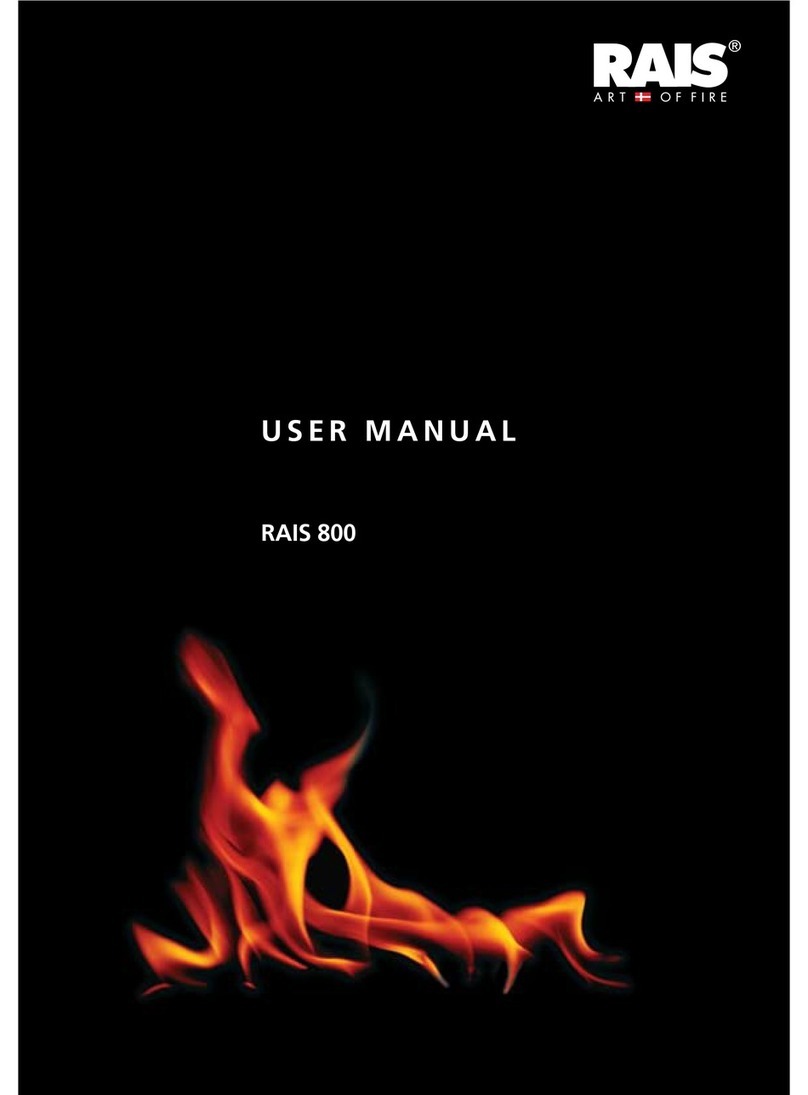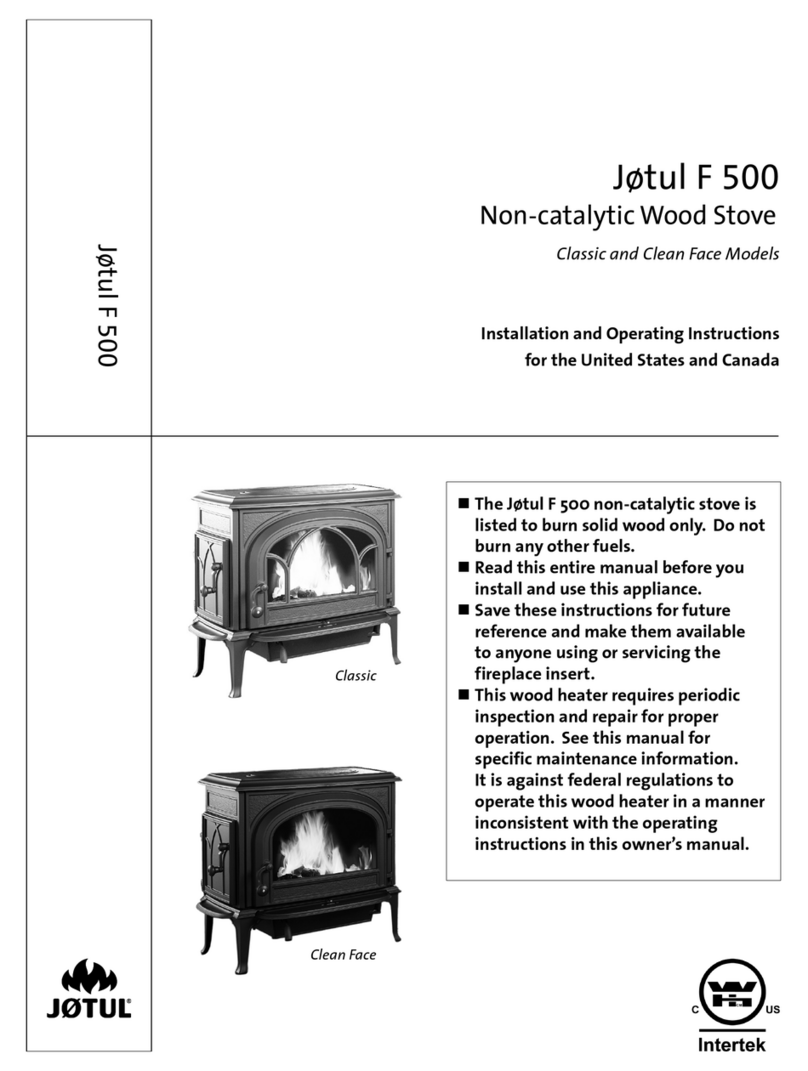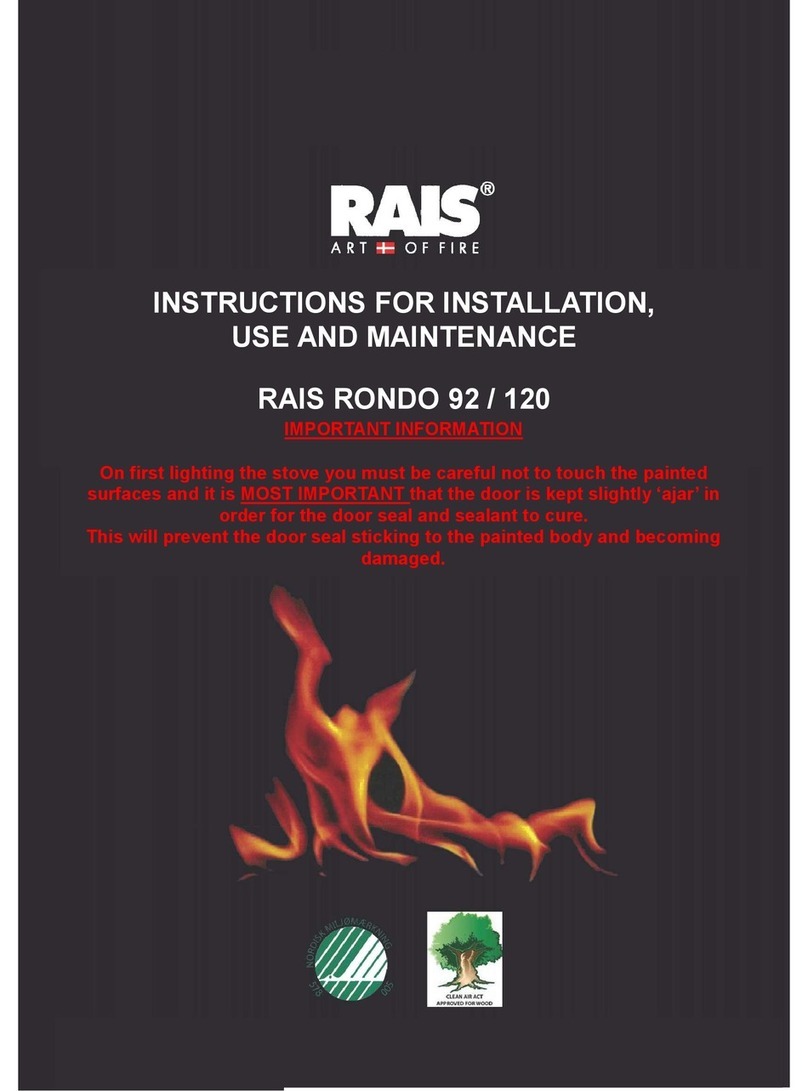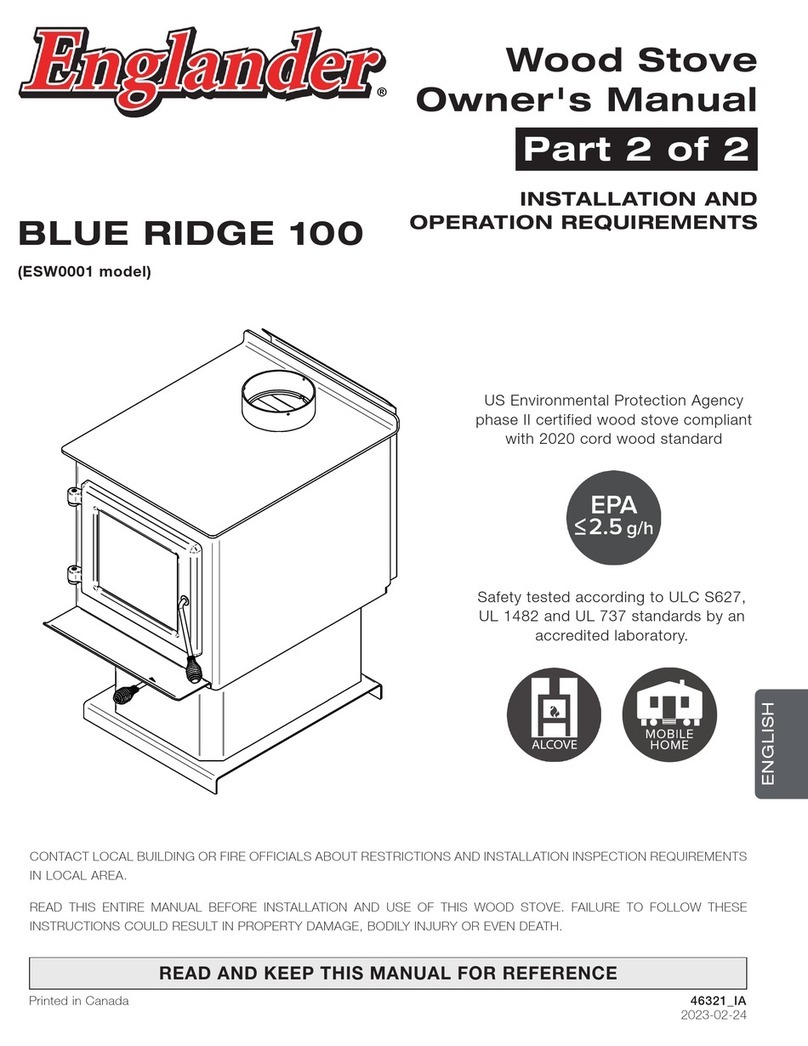
Page 3
Wood Stove - Owener's Manual -
ENGLISH
TABLE DES MATIÈRES
1. Safety Information and Environment ..................................................................................... 5
1.1 Mobile Home........................................................................................................6
1.2 Regulations Covering Stove Installation..................................................................6
1.3 Location of the Certification Label .........................................................................6
1.4 Emissions and Efficiency.......................................................................................7
1.5 Materials..............................................................................................................7
2. Fuel .......................................................................................................................................... 8
2.1 Tree Species ........................................................................................................8
2.2 Log Length ..........................................................................................................9
2.3 Piece Size............................................................................................................9
2.4 Compressed Wood Logs.......................................................................................9
2.5 Drying Time .........................................................................................................9
3. Burning Wood Efficiently...................................................................................................... 10
3.1 First Use............................................................................................................10
3.2 Lighting Fires .....................................................................................................10
3.3 Zone Heating .....................................................................................................12
3.4 Combustion Cycles.............................................................................................12
3.5 Rekindling a Fire ................................................................................................13
3.6 Removing Ashes.................................................................................................13
3.7 Air Intake Control ...............................................................................................14
3.8 Fire Types ..........................................................................................................14
4. Maintenance.......................................................................................................................... 16
4.1 Heater ...............................................................................................................16
4.2 Refractory Materials and Baffle............................................................................16
4.3 Glass Door.........................................................................................................17
5. Operating the Stove.............................................................................................................. 17
5.1 Blower Operation ...............................................................................................18
5.2 The Use of a Fire Screen ....................................................................................18
5.3 Exhaust System .................................................................................................19
6. The Venting System .............................................................................................................. 20
6.1 General ............................................................................................................20
6.2 Suitable Chimneys..............................................................................................20
6.3 Factory-Built Metal Chimneys ..............................................................................21
6.4 Minimum Chimney Height....................................................................................22
6.5 Chimney Location...............................................................................................22
6.6 Supply of Combustion Air ...................................................................................23
6.7 Installing the Chimney Connector ........................................................................25
